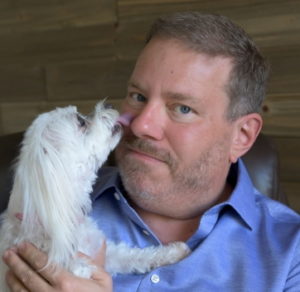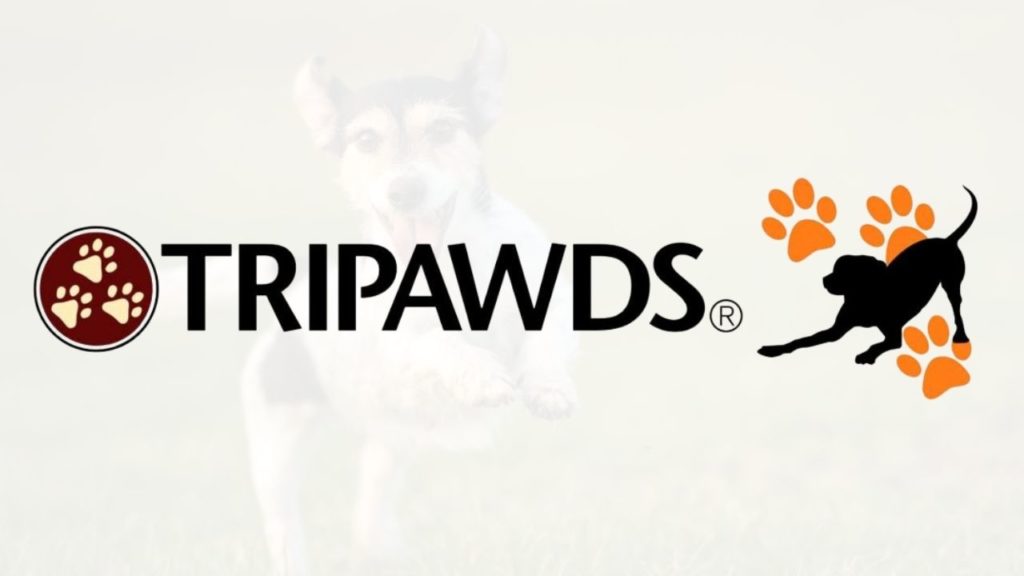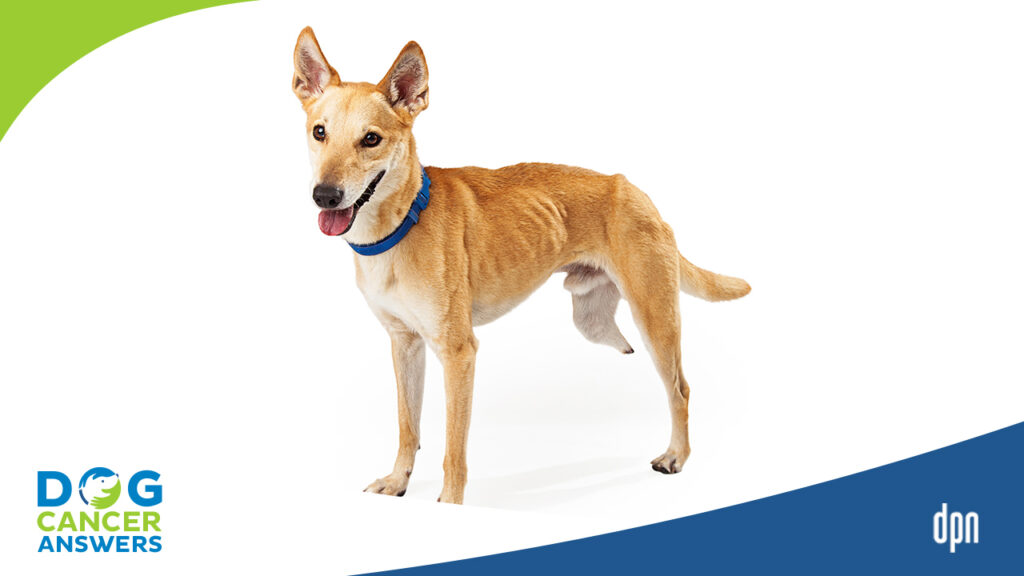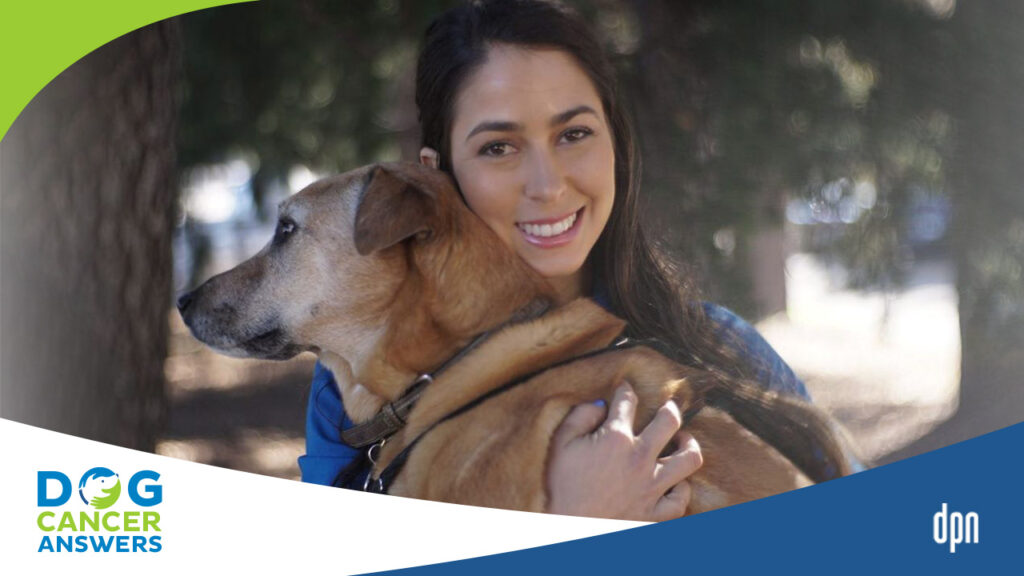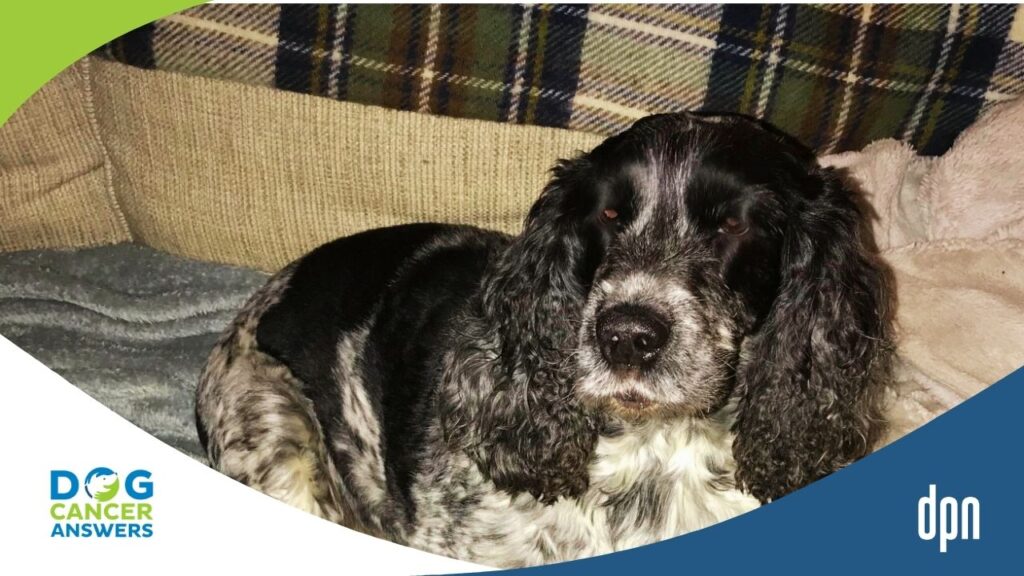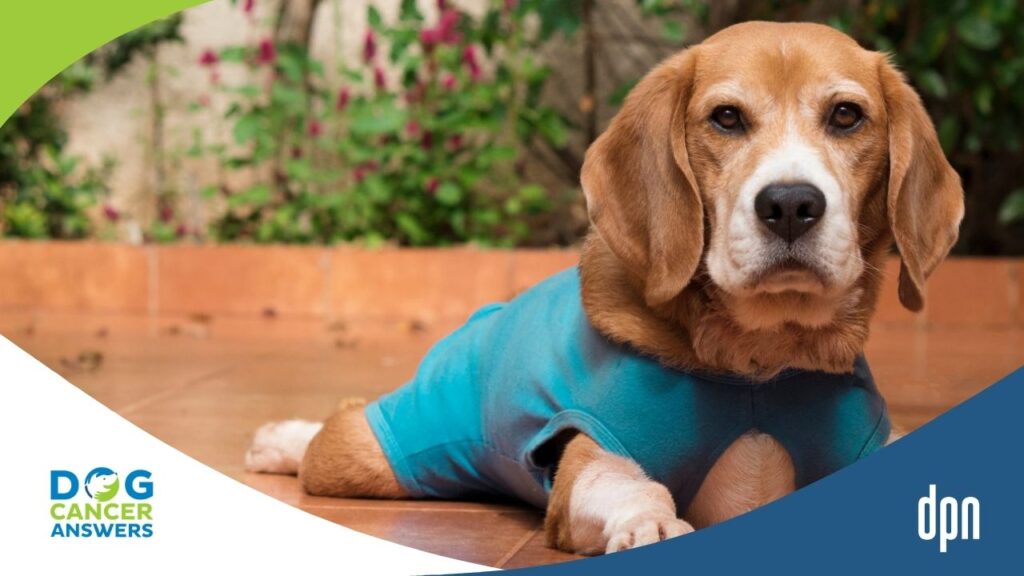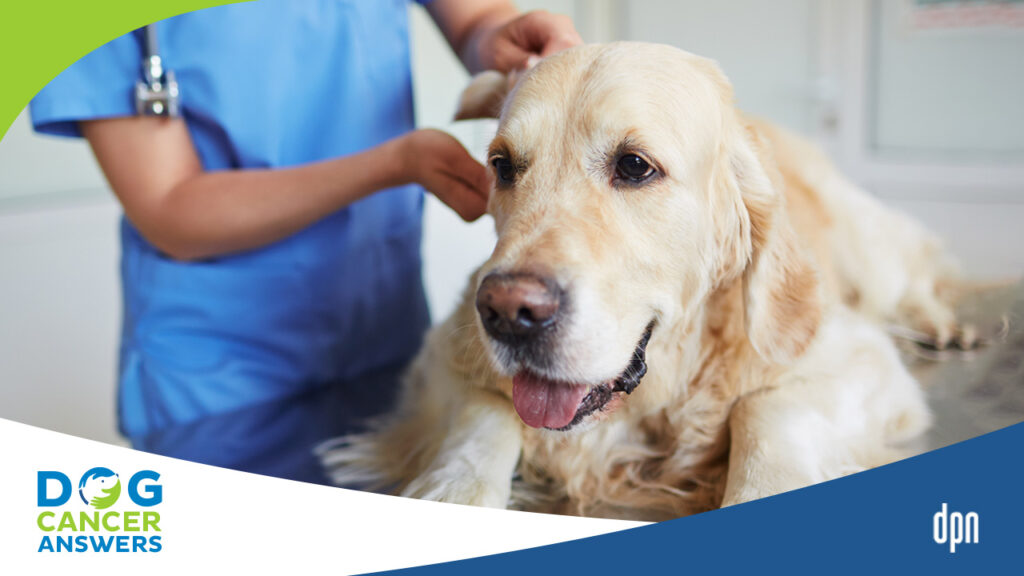[00:00:00] >> James Jacobson: Today in our special Exam Room Series, osteosarcoma, and what you need to know to help your dog.
[00:00:07] >> Announcer: Welcome to Dog Cancer Answers, where we help you help your dog with cancer. Here’s your host, James Jacobson.
[00:00:15] >> James Jacobson: Hello friend. Let me start off by saying, I’m sorry. I am sorry that you’re listening to this podcast.
[00:00:23] Sure. I know that it’s an odd thing for a host to say in a welcome message, but the fact that you’re listening to my voice now probably means that you have a dog that has been diagnosed with osteosarcoma. Now, I’ve been there, and I know what it’s like to have a dog who has cancer. I also want to let you know that you are in the absolute best place because you’re in good company.
[00:00:46] Unfortunately, cancer is the number one killer of dogs, but there is a lot of hope. Dogs do not have an expiration date stamped on their forehead. There are so many things that you can do to help your dog after you get an osteosarcoma diagnosis. I’m lucky. My veterinarian is Dr. Demian Dressler, author of the bestselling book, The Dog Cancer Survival Guide.
[00:01:09] He is a renowned authority on full spectrum approaches to treating dog cancer. And today you can come into his exam room and listen to what he would tell one of his clients whose dog was diagnosed with osteosarcoma.
[00:01:25] >> Dr. Damien Dressler: So osteosarcoma is a pretty aggressive cancer, but that doesn’t mean that there’s nothing else that you can do. Usually when guardians come home after receiving this type of bone cancer diagnosis, understandably they’re devastated because they’re usually faced with a discussion that centers, but somewhere around amputation somewhere around some really grim survival statistics. And the entire discussion is quite ghastly and quite gory and pretty horrifying. So osteosarcoma what that is, is it’s a tumor growing out of bone. Now, most commonly it occurs in large breed dogs, occasionally smaller dogs, but most often large and giant breed dogs.
[00:02:07] And one of the ways it first comes up is by limping or stiffness because it’s a painful cancer. A lot of times when we talk about cancer, the question of pain comes up and actually pain is not all that common with cancer. You can feel bad if you’re a dog or a person, you can feel sick, but that’s not the same thing as pain.
[00:02:24] Those are different. When we’re talking about osteosarcoma, however, that’s an exception. Osteosarcoma causes pain. So that’s why it’s so important, initially, when a dog is limping to get an x-ray done, particularly if the dog is old and particularly if there is something that’s not going away within a day or two, because you can see these tumors. The earlier that you act with osteosarcoma, the better off that you are. Now the best thing to do I think, at least in my opinion, and based on my experience, is try to guard the guardian. And what I mean by that is what I discussed in The Dog Cancer Survival Guide. And the guardian decision-making process needs to come from a healthy mental state and osteosarcoma has a particular quality about it because amputation is a very common part of the discussion.
[00:03:13] Usually it pops up in the limbs. That is the cancer of the dog. And because amputation is part of the discussion, it creates a lot of very violent, emotional responses from people. This was the reason why we wrote the chapter oriented around what we call putting on your oxygen mask. In order to function successfully as a guardian, one cannot be overwhelmed by things like grief and things like stress and anxiety, because these processes will completely disrupt a lucid decision-making faculty for people.
[00:03:47] You can’t make good decisions when you’re overcome by grief or anxiety. So that was the purpose for that chapter in The Dog Cancer Survival Guide. So that’s the first step. Guard the guardian. Try to clear out these negative feelings as much as you can so that you can be effective for your dog. Another thing that’s very important is whether or not to amputate. Most people when they first hear the word immediately, the answer is no, I get it.
[00:04:12] That makes sense. But what they don’t realize is that dogs are different from people. Dogs, first of all, have four legs. That means you still have three legs to go on. A human being who has had an amputation only has one leg, and that’s an entirely different circumstance because dogs on three legs often will get around very well.
[00:04:30] There’s a website and a whole community of guardians that are coping with having what’s called a tripawd. And this is a group of people that communicate online and it’s a very useful resource and you can exchange information. So I’d encourage people considering whether or not to do an amputation, to go read about some of the experiences.
[00:04:49] It’s often not as bad as you think from the dog’s standpoint. Another very important thing to realize with osteosarcoma, people will come to me a lot of times for second opinions. And they’ll say like, well, the vet took x-rays of the chest so I know that there are no more cancer cells in my dog’s body because an amputation was done and it got rid of all the bad cells, false.
[00:05:10] That’s not true. And the reason why that’s not true is more than 90% of these cancers have spread at the time of diagnosis. Well, then the question comes up, well, what about the x-rays? Those x-rays are clear. There’s no cancer cells in there. That’s wrong. Most of the time because of what’s called micrometastasis, that means little tiny cells in the lungs. You can’t see those cells. So in The Dog Cancer Survival Guide, we talked about the ways that we can decrease the growth of those cells, because it’s those very cells that’ll pop up 6, 8, 12 months later in the lungs or occasionally in the lymph nodes or other places.
[00:05:45] And you need to act to do something around those cells to try to prevent those cells from growing as much as you can, whether it’s diet, whether it’s supplements of all the different varieties and all the different additional approaches that we talk about in a book, those are important to get started now, even though we do not see evidence of tumor spread on the x-ray. So those are some additional pointers for osteosarcoma.
[00:06:13] >> James Jacobson: If you’d like to hear more about dog cancer and what you can do to help your dog now, I encourage you to pick up a copy of Dr Dressler’s book, which just happens to be the sponsor of today’s episode and this entire special Exam Room Series here on Dog Cancer Answers.
[00:06:30] The name of this best-selling book is The Dog Cancer Survival Guide: Full Spectrum Treatments to Optimize Your Dog’s Life Quality and Longevity. The authors are Dr. Demian Dressler, who you just heard from, and Dr. Susan Ettinger, an oncologist in New York. And in a minute, I will tell you how to get their book at a discount.
[00:06:50] This book is considered the bible of dog cancer, and it covers so much information in an easy to understand, easy to reference guide. For example, the book covers everything that you need to know about conventional veterinary treatments, that’s surgery, chemotherapy, and radiation, including how to reduce their side effects.
[00:07:09] The most effective, non-conventional options, including botanical nutraceuticals, supplements, nutrition, and mind, body medicine, and the book helps you to analyze the options and develop a specific plan for your own dog based on your dog’s type of cancer, your dog’s age, your financial budget and your time constraints, as well as your personality.
[00:07:31] The Dog Cancer Survival Guide is available wherever fine books are sold, both online and in physical bookstores. It’s available either in paperback or as an e-book edition and the e-book is under $10. The website to get either their paperback or the e-book is www.DogCancerBook.com. And you will save 10% if you use the promo code PODCAST, when you checkout you’ll save 10% the website again, www.DogCancerBook.com. Use the promo code PODCAST for 10% off. That is www.DogCancerBook.com.
[00:08:07] I want to let you know that we have lots of free helpful information on our podcast website, the URL is DogCancerAnswers.com. It’s where you can listen to or download our entire back catalog of episodes. It’s the best way to get the information that you need to help optimize your dog’s life quality and longevity.
[00:08:34] Do you have a question for a dog cancer veterinarian? Well, one of our veterinarians could answer your question on a future episode of Dog Cancer Answers. Please call our listener line and record your question. The telephone number is (808) 868-3200. That is (808) 868-3200. Or visit our website at DogCancerAnswers.com.
[00:08:58] With dog cancer, you want to get relevant information as quickly as possible. So make sure you get the next episode of our podcast as soon as it’s released by subscribing to Dog Cancer Answers in Apple Podcast or your favorite podcast app. We’re also on Spotify as well as YouTube.
[00:09:18] That’s all for this episode in our Exam Room Series. I’d like to thank Dr. Demian Dressler for being our guest today. Until next time. I’m James Jacobson. From all of us here at Dog Cancer Answers and Dog Podcast Network, I wish you and your dog, a warm, Aloha.
[00:09:39] >> Announcer: Thank you for listening to Dog Cancer Answers. If you’d like to connect, please visit our website at DogCancerAnswers.com or call our listener line at (808) 868-3200. And here’s a friendly reminder that you probably already know. This podcast is provided for informational and educational purposes only.
[00:09:58] It’s not meant to take the place at the advice you receive from your dog’s veterinarian. Only veterinarians who examine your dog can give you veterinary advice or diagnose your dog’s medical condition. Your reliance on the information you hear on this podcast is solely at your own risk. If your dog has a specific health problem, contact your veterinarian.
[00:10:16] Also, please keep in mind that veterinary information can change rapidly. Therefore, some information may be out of date.

